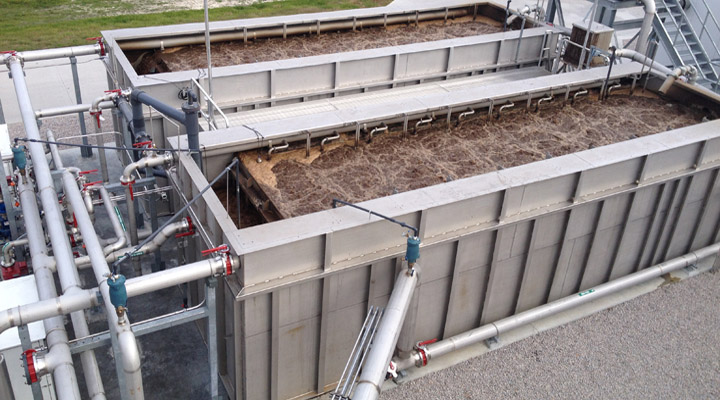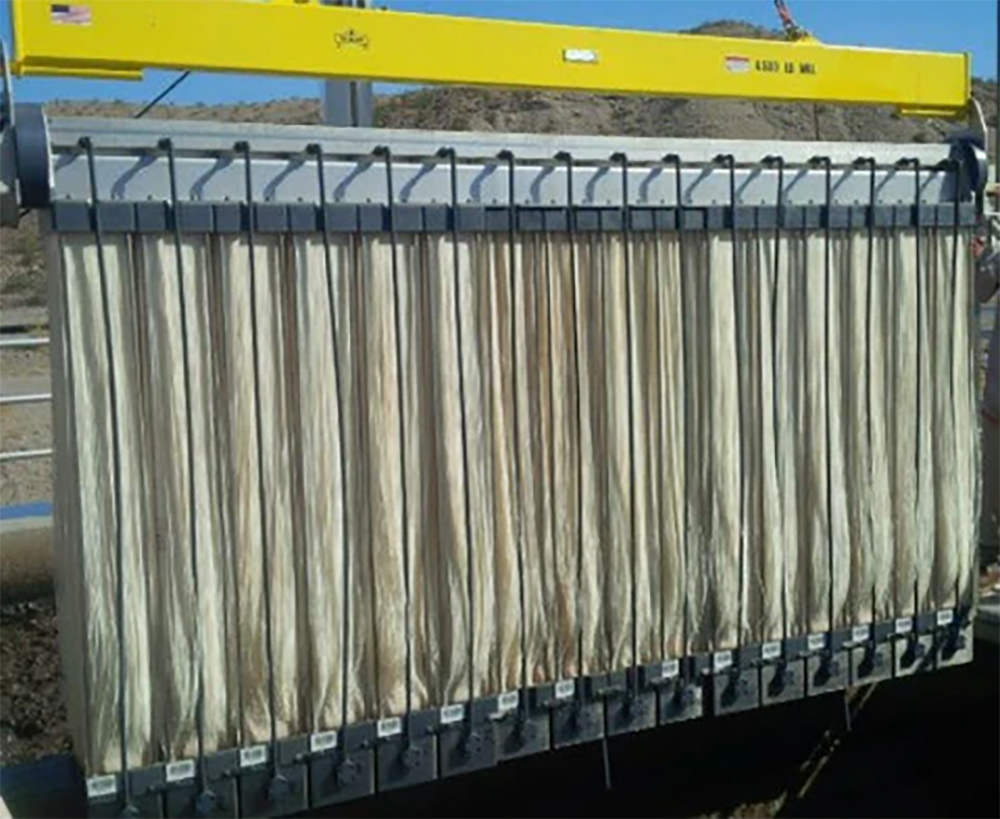Understanding the Basics of Membrane Bioreactor Systems for Wastewater Management
Wiki Article
Just How Membrane Layer Bioreactors Are Revolutionizing Water Filtration Systems
The emergence of membrane bioreactors (MBRs) stands for a substantial advancement in the field of water purification, merging biological therapy processes with cutting-edge membrane filtration technologies. As global water deficiency magnifies, the function of MBRs in helping with drinkable water reuse and sustainable water management becomes significantly critical.Review of Membrane Layer Bioreactors
Membrane layer bioreactors (MBRs) stand for a considerable development in water filtration modern technology, as they incorporate organic treatment processes with membrane layer filtration. This integration enhances the performance of wastewater therapy by using microorganisms to degrade organic pollutants while at the same time employing semi-permeable membrane layers to separate treated water from suspended solids and microorganisms.The MBR system typically contains an organic activator where the microbial population metabolizes impurities, adhered to by a membrane filtration device that maintains biomass and allows just clean water to pass through. This twin capability results in greater effluent high quality compared to standard treatment approaches. MBRs can be operated in both batch and continuous circulation modes, offering versatility in design and application.
In Addition, MBRs are identified by their small footprint, making them ideal for urban setups with space restraints. Membrane Bioreactor. They additionally allow the recuperation of water for reuse, therefore contributing to water sustainability efforts. While MBR modern technology has actually gained appeal in commercial and community applications, its functional complexities and power needs necessitate cautious factor to consider throughout execution. In general, MBRs are at the center of enhancing water therapy performance and high quality, showcasing the possibility for innovative services in ecological administration.
Advantages of MBR Modern Technology
The assimilation of organic treatment with membrane filtering uses various advantages for water filtration procedures. One of the main advantages of Membrane layer Bioreactor (MBR) modern technology is its capability to properly remove both organic and inorganic contaminants, bring about premium effluent. The membrane layers function as a physical obstacle, stopping put on hold solids and microorganisms from passing through, which enhances the overall safety and reliability of treated water.Additionally, MBR systems call for a smaller footprint compared to conventional therapy approaches, permitting a lot more efficient space utilization. This portable layout is especially helpful in city setups where land is restricted. MBRs likewise demonstrate functional adaptability, fitting differing influent top qualities and flow prices without substantial performance deterioration.
Moreover, the process offers boosted nutrient removal capabilities, particularly for nitrogen and phosphorus, which are essential for avoiding eutrophication in receiving waters. The lowered sludge production associated with MBR modern technology also converts to reduce disposal costs, making it an affordable solution over time - Membrane Bioreactor. In general, the benefits of MBR modern technology position it as a leading selection for sustainable and innovative water purification systems, attending to both environmental and financial issues
Applications in Water Filtration
Applications of Membrane Bioreactor (MBR) modern technology in water purification are impactful and diverse, attending to various therapy needs throughout several fields. MBRs successfully combine biological therapy processes with membrane layer filtration, making them suitable for community wastewater therapy, commercial effluent management, and also safe and clean water reuse efforts.In community settings, MBRs are progressively used to enhance the high great post to read quality of dealt with wastewater, permitting conformity with stringent discharge regulations and helping with the recycling of water for irrigation and non-potable usages. Their portable layout additionally makes them suitable for urban environments where space is limited.
Industrially, MBR innovation is used to deal with procedure water and wastewater, especially in markets such as food and drink, pharmaceuticals, and fabrics. By efficiently eliminating impurities and put on More Info hold solids, MBRs aid markets decrease ecological influences while recouping beneficial sources from wastewater streams.
Moreover, MBRs are gaining traction in decentralized water therapy applications, where small systems can be deployed in remote locations or developing regions. This versatility enables communities to achieve sustainable water monitoring services, enhancing access to tidy water while lowering dependence on conventional treatment techniques.
Instance Researches and Success Stories

In an additional example, a textile production center in Bangladesh took on MBR innovation to address its wastewater obstacles. The system decreased chemical oxygen demand (COD) degrees from 1,200 mg/L to less than 100 mg/L, thus meeting governing requirements and significantly decreasing environmental influence.
The University of Cape Community's MBR setup has verified effective in dealing with greywater for non-potable reuse on campus. This task not only saves potable water however also offers as an educational design for lasting methods.
Moreover, a seafood handling plant in Norway made use of MBR innovation to deal with effluents containing high degrees of natural issue, accomplishing over 90% toxin removal. These situation researches underscore MBR innovation's convenience and its crucial role in improving water top quality across diverse applications.
Future of Water Therapy Solutions
As international water scarcity and air pollution difficulties intensify, cutting-edge water treatment services are coming to be progressively necessary to make certain lasting access to tidy water. The future of water therapy depends on the combination of innovative technologies that enhance the effectiveness and efficiency of filtration procedures. Membrane layer bioreactors (MBRs) are at the leading edge of this advancement, incorporating organic therapy with membrane layer purification to generate premium effluent ideal for numerous applications.
Arising fads such as source healing from wastewater, consisting of nutrients and power, will certainly additionally transform treatment facilities right into eco-friendly centers. Moreover, innovations in nanotechnology and membrane layer materials promise improved efficiency and long life of filtering systems.

Verdict
In final thought, membrane bioreactors stand for a considerable development in water filtration innovations, efficiently incorporating organic treatment with innovative membrane purification. The many advantages, including boosted effluent high quality and reduced spatial needs, make MBRs especially ideal for metropolitan applications. Their role in drinkable water reuse and lasting water administration highlights their relevance in attending to global water shortage obstacles. Continued study and advancement will certainly additionally enhance the efficiency and adoption of MBR innovation, ensuring a durable future for water therapy solutions.The emergence of membrane bioreactors (MBRs) represents a significant improvement in the area of water filtration, merging biological treatment processes with advanced membrane layer purification modern technologies. As worldwide water deficiency magnifies, the function of MBRs in assisting in drinkable water reuse and lasting water monitoring comes to be significantly critical. They additionally make it possible for the recuperation of water for reuse, hence adding to water sustainability campaigns.As international water deficiency and air pollution obstacles escalate, innovative water treatment options are ending up being progressively vital to make sure sustainable access to clean water. Their duty in safe and clean water reuse and sustainable water management highlights their importance in addressing international water deficiency difficulties.
Report this wiki page